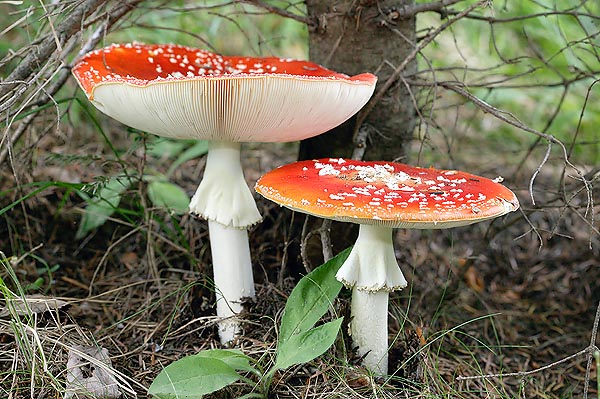
The “Fly Agaric” mushroom, Amanita Muscaria, is one of the most intriguing and enigmatic fungi in the world. Despite its toxic nature, it has been used for centuries in religious rituals and traditional healing practices. Its history is steeped in legend and folklore, making it a subject of curiosity and debate.
Origins of Amanita Muscaria
Amanita Muscaria is native to Alaska and is also found in Europe, Asia, and North America. It thrives in coniferous and deciduous forests, with a particular affinity for birch woodlands. The mushroom typically emerges between late summer and early fall.
Belonging to the Basidiomycota phylum and the Amanitaceae family, it is a type species within the genus Amanita, which includes around 200 species. Many members of this genus are highly toxic. The name “Amanita” derives from the Latin word for “mushroom,” while “Muscaria” stems from the Latin word for “fly” (musca).
The mushroom is commonly referred to by various names, including fly agaric, fly amanita, and toadstool. Its distinctive red cap with white spots has become an iconic symbol in art and popular culture.
Historical Significance
Amanita Muscaria boasts a rich history, dating back to ancient times. References to the mushroom can be found in texts as early as the 11th century, and its unique appearance has been captured in the works of artists such as Hieronymus Bosch and Pieter Bruegel.
In many cultures, the mushroom was believed to possess magical properties. In Europe, it was associated with witches and fairies, while in Asia, it played a central role in shamanic rituals.
Medicinal Uses
Historically, Amanita Muscaria was used as a remedy for ailments such as gout, rheumatism, and toothaches. In Traditional Chinese Medicine, it is still employed to address conditions like fatigue, anxiety, and depression.
Psychoactive Properties
The mushroom is also known for its psychoactive compounds, including ibotenic acid and muscimol. These substances have been used in spiritual and ritualistic contexts for centuries. In the 20th century, Amanita Muscaria gained attention in the West, thanks to figures like Timothy Leary and Robert Gordon Wasson.
A Controversial Legacy
The use of Amanita Muscaria remains a topic of debate. Some advocate for its potential in medicine and spirituality, while others caution against its toxic and unpredictable effects.
Regardless of opinion, Amanita Muscaria continues to captivate scientists, historians, and enthusiasts alike, standing as a symbol of nature’s complexity and cultural significance.
Final Thoughts
Amanita Muscaria is more than just a mushroom—it is a cultural icon with a deep and multifaceted history. Whether studied for its traditional uses or admired for its beauty, this mushroom holds a unique place in human history.
If you’re curious to learn more about Amanita Muscaria, explore our other resources for an in-depth look at its fascinating world.

If you’re interested in trying dried Amanita Muscaria for yourself, be sure to check out our online store. We offer high-quality, amanita muscaria for sale at a great price.




